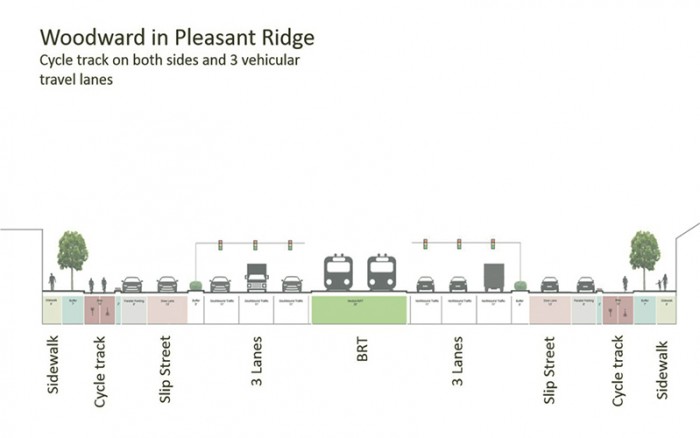From Highway to Avenue
Big plans are afoot to transform the I-696 / Woodward intersection… and, eventually, all of Woodward Avenue, from the riverfront to Pontiac… into something much more friendly to pedestrians and cyclist
—-
Ferndale is lucky. Large enough to have variety, yet compact enough to be easily traversed, with offices, restaurants, and entertainment in range of bike or feet.
But head north, toward the zoo and downtown Royal Oak, and you’ll run into the barrier that is the current I-696 / Ten Mile Road intersection. Unless you’re driving a car, it’s a formidable and dangerous prospect to get anywhere. Even as a driver, the experience is bleak, gray, and uninviting. It’s a monument to the ubiquity of the automobile in American life, and these days, with environmental consciousness on the rise and a growing interest in healthy, energy-saving means of travel, it’s frankly outdated.
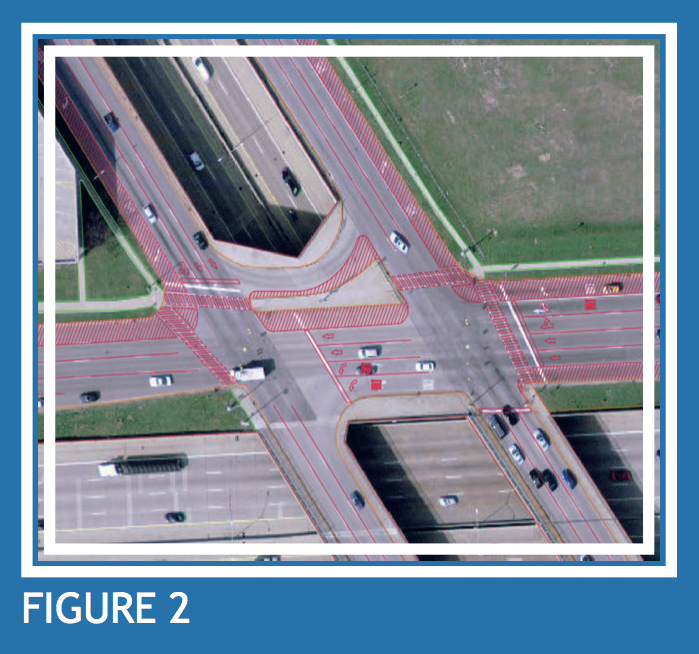 But change is coming. The Woodward Avenue Action Association recently hired the internationally-recognized Gibbs Planning Group to develop a plan to give the intersection a pedestrian- and bike-friendly makeover. The study was funded by the cities of Pleasant Ridge, Royal Oak, and Huntington Woods. Study completed, presentation done, MDoT is currently putting together the funds for the project. If all goes well, we could start seeing the plan put into action as soon as late this summer.
But change is coming. The Woodward Avenue Action Association recently hired the internationally-recognized Gibbs Planning Group to develop a plan to give the intersection a pedestrian- and bike-friendly makeover. The study was funded by the cities of Pleasant Ridge, Royal Oak, and Huntington Woods. Study completed, presentation done, MDoT is currently putting together the funds for the project. If all goes well, we could start seeing the plan put into action as soon as late this summer.
I traveled to the neat, modestly-sized office of the Gibbs Planning Group in downtown Birmingham to
discuss the project with company president Robert Gibbs. A tall man with a soothing voice and a quiet, focused intensity, he’s been in business for 25 years as a landscape architect and professional planner. In that time, he’s built up an international reputation in urban planning circles as one of the most innovative and accomplished members in his field. He’s authored five books on urban planning and is one of the originators of “New Urbanism,” a design philosophy that encourages walkable, mixed-use neighborhoods. Each summer, Gibbs travels to the Harvard Graduate School of Design, as he has for the past 20 years, to teach a course on urban retail planning. He also has a connection to Ferndale. It was his presentation and recommendation to narrow 9 Mile west of Woodward to two lanes and offer on-street parking that was the impetus for transforming our main street into the thriving, walkable downtown district it is today.
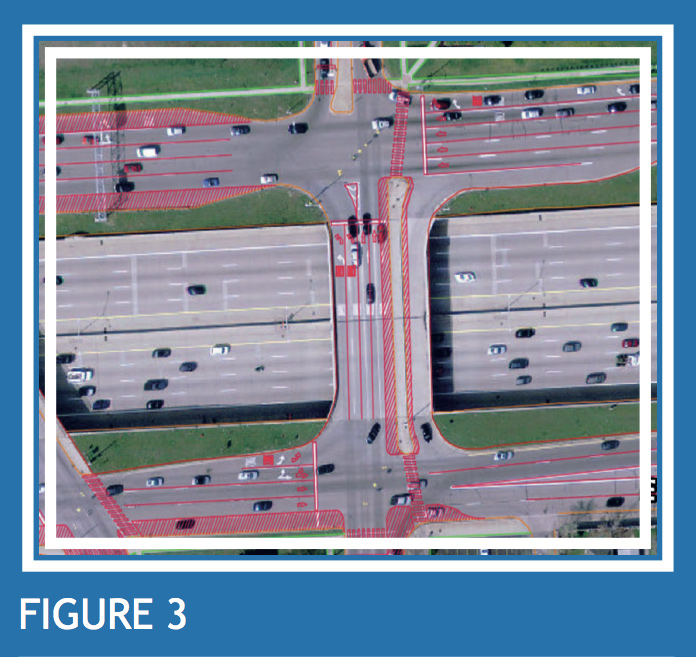 “We’ve done work in 45 states.” Gibbs says. The firm typically has only two or three projects a year in Michigan, which is why he’s very excited to be involved in this one.
“We’ve done work in 45 states.” Gibbs says. The firm typically has only two or three projects a year in Michigan, which is why he’s very excited to be involved in this one.
Studies show that five percent of Michigan residents live within two miles of Woodward Avenue. “It’s Michigan’s Main Street.” Gibbs smiles. It’s his goal to help it live up to that name, but there’s a lot of work to be done. The current design of the intersection presents a lot of challenges. Gibbs flips
through a thick sheaf of photos of the I-696 / Woodward intersection, taken from various vantage points. He points
out the problems that their studies have revealed as he goes. From a pedestrian standpoint, it isn’t safely walkable. The roads are too wide, and the traffic goes too fast. There’s also the business angle to consider.
“The underpass has ruined both sides of Woodward for commerce.” Gibbs explains. The underpass, only usable by cars, cuts the road off from the businesses up top. He asks if I’ve noticed the restaurant up there that keeps re-opening and going out of business. I have. By the time drivers see a business, it’s too late. There’s no place to turn right. Gibbs is quick to say that he intends no criticism of MDoT for the design. “When they built it 20 years ago, it was state of the art.” But, he says, they wouldn’t build it like that today. Ideas have changed as the science of urban planning continues to evolve.
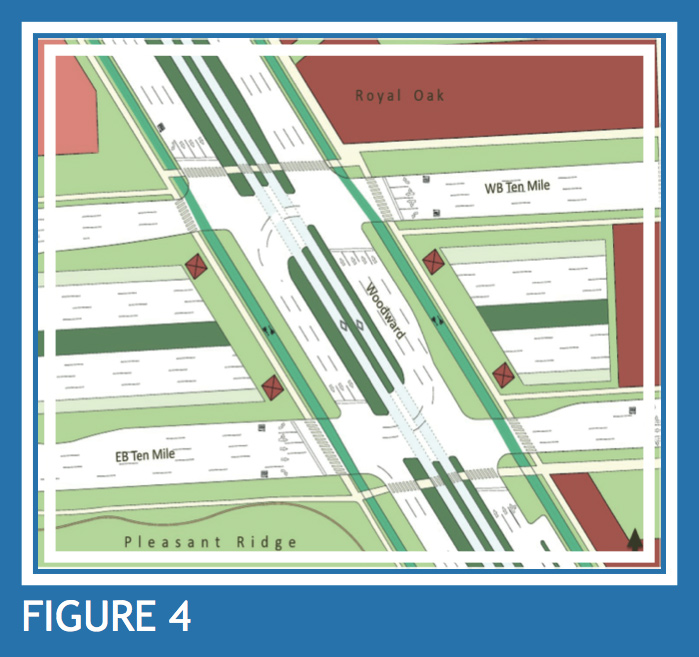 Gibbs isn’t working on a solution alone. He’s brought in a pair of international traffic consultants, Peter Swift from Colorado (who spent time in Iraq, working to rebuild that country’s infrastructure) and Rick Chellman from New Hampshire. He’s also consulting with Mike Lydon, a bike transport expert and one of the originators of “tactical urbanism.”
Gibbs isn’t working on a solution alone. He’s brought in a pair of international traffic consultants, Peter Swift from Colorado (who spent time in Iraq, working to rebuild that country’s infrastructure) and Rick Chellman from New Hampshire. He’s also consulting with Mike Lydon, a bike transport expert and one of the originators of “tactical urbanism.”
The goal is to change Woodward from a highway back into an avenue. In the urban planning business, these are two very different things. Highways, Gibbs explains, are high-speed and intended only for cars. Avenues handle the same number of cars per day, but the speeds are lower, and are intended for mixed-use.
Thus, the vision is for Woodward Avenue to live up to its name and be usable not just for cars, but for bicycles, pedestrians, and public transport as well. How to get there? “Traffic calming” is the term that Gibbs throws out. Slowing traffic speeds will be accomplished by widening sidewalks, narrowing the car lanes slightly by installing dedicated bike lanes, and planting trees in the medians and along the sides of the road. Trees serve three purposes. One, it gives pedestrians a sense of safety to have trees between them and the road. Two, the trees make the road look narrower, thus getting drivers to slow down. Three, the trees provide shade, visual interest, and environmental relief by cutting down noise, heat, and smog. The center of Woodward, Gibbs adds, will be where they plan to run the public transport, at this point projected to be a BRT, or Bus Rapid Transit system, similar to the “bus trolleys” that currently run in Toronto and other major cities. In the final stages, the bike lane will be separated from the road by a low, protective curb. (See Figure 1)
How does an urban planner figure out what should go where? Gibbs gives me an example of a small part of the project. He shows a photo of the corner of southbound Woodward and 10 Mile. The right turn lane onto 10 Mile has been painted over in red. “We counted less than 200 cars a day using this lane.” Gibbs says. “So we’re recommending getting rid of it.” This will narrow the road from four lanes to three, making pedestrian crossings there shorter and safer. They’ll implement the changes in stages, studying the effects on traffic as they go. The first step here would be to conduct detailed research and engineering and block off the lane with portable barriers. If there are no problems, the lanes will be painted out. (See Figures 2 and 3) The final stage will be to extend the curb outward, physically eliminating the lane. They plan on beginning the first stage as early as September, when summer vacation ends and traffic patterns return to normal. Phase two could start as early as next spring.
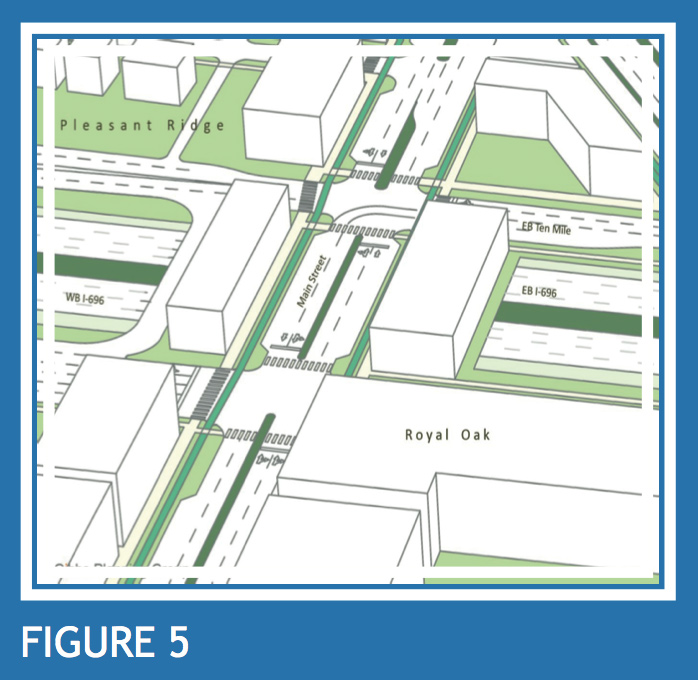 I spoke by phone with Deborah Schutt, Executive Director of The Woodward Avenue Action Association, and leader of the vision of making Woodward into a true avenue once more. As she explained to me, though, that vision goes much further than a few intersections. There’s a plan in place to remake Woodward all the way from downtown Detroit to downtown Pontiac, connecting city to suburbs with continuous public transport, bike lanes, and a safer, better-designed roadway lined with new shops.
I spoke by phone with Deborah Schutt, Executive Director of The Woodward Avenue Action Association, and leader of the vision of making Woodward into a true avenue once more. As she explained to me, though, that vision goes much further than a few intersections. There’s a plan in place to remake Woodward all the way from downtown Detroit to downtown Pontiac, connecting city to suburbs with continuous public transport, bike lanes, and a safer, better-designed roadway lined with new shops.
“We need a more holistic and complete street that serves everybody,” She says. MDoT’s master plan for “Complete Streets” has been approved, in concept, by all of the cities along the route. The big remaining hurdle is getting together the funding, but that’s a problem with any large project. The time frame for the whole project? Twenty years.
Back in the office of Robert Gibbs, he shows me the final jewel in the crown, the ultimate goal of his plan. The Woodward underpass will be eliminated, (See Figure 4) and the street will flow above, with buildings on both sides of the street, built above I-696. (See Figure 5) “The goal is for people to not even know there’s a freeway running below them.” He shows me a photo of a similar project recently completed in Columbus, Ohio.
Picture it in your mind’s eye — families walking up to the zoo, couples riding bikes into downtown Royal Oak, a senior group taking a trip on a trolley bus to the ballpark. From a highway to an avenue, connecting Detroit with its suburbs. A pleasant Main Street for all of Michigan, a road that’s usable, and enjoyable, by all.
If some happened with our soundness, we believe there is a solution to any maladies in a cure. What medicines do patients purchase online? Viagra which is used to treat emasculation and other states united to erectile disfunction. Learn more about “sildenafil“. What folk talk about “viagra stories“? The most substantial aspect you should look for is “sildenafil citrate“. Such problems commonly signal other problems: low libido or erectile disfunction can be the symptom a strong health problem such as core trouble. Causes of sexual dysfunction turn on injury to the penis. Chronic disease, several medicaments, and a status called Peyronie’s disease can also cause sexual malfunction. Even though this medicine is not for use in women, it is not known whether this treatment passes into breast milk.

